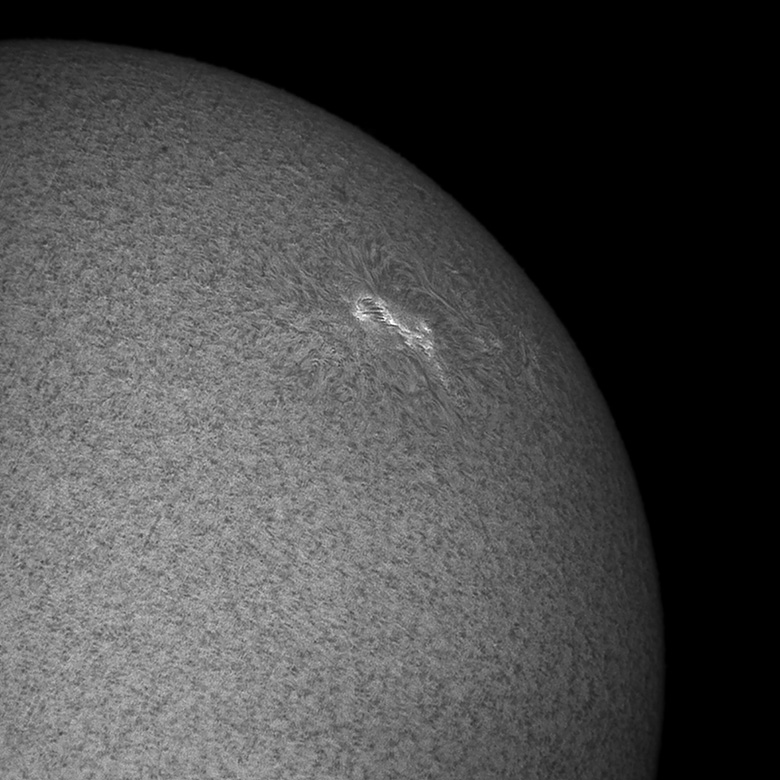|
Staring at the Sun, 14 :: home :: |
|
This is AR 11089 retreating toward the limb as seen through my new favorite optical train: two barlows, focussed with the jeweler's visor. Both images are portions of a frame made by combining thirty, 0.2 sec exposures at ISO 400 through the double-stacked etalons. I let the Canon remote release control the collection of images then defined a Maxim macro to do most of the conversion work (open the CR2 files using the red Bayer plane only, stretch to the range of each image, store as 16 bit TIFF's). Registax 5 took it from there, and of course I applied unsharp masking and tone adjustments in Photoshop to finish it all off. I still fumble and fuss to get Registax to do its stuff, but when it works, it works very well, and there's more capability buried in options I don't yet know how to use. While hunting for tips on stacking images for resolution, I ran across a link to FocusMagic, which (at first glance) appears to be a great success as a deconvolution utility. See above! AR 11089 fired off a C2 flare a couple of hours after these photos. Clouds. Anyway, my digital handwaving this afternoon has proved much more promising than my opto-mechanical shenanigans were this morning. Four pictures are better than one. Ten are better than four. Thirty are better than ten. Maybe tomorrow, weather willing, I'll try a hundred. With a monochrome video camera we could try hundreds or thousands. Quality tracks the square root of the number of images, where "qualty" means lack of noise, and noise includes "grain" as well as atmospheric turbulence. So four pix are roughly twice as clean as two. Sixteen are twice as clean as four. Sixty four are twice as clean as sixteen. A hundred are ten times cleaner than one. This is a more immediately promising route than extra aperture. Not that we can't try both strategies. But let's think on that extra aperture option a bit.
|
:: top ::
© 2010, David Cortner

